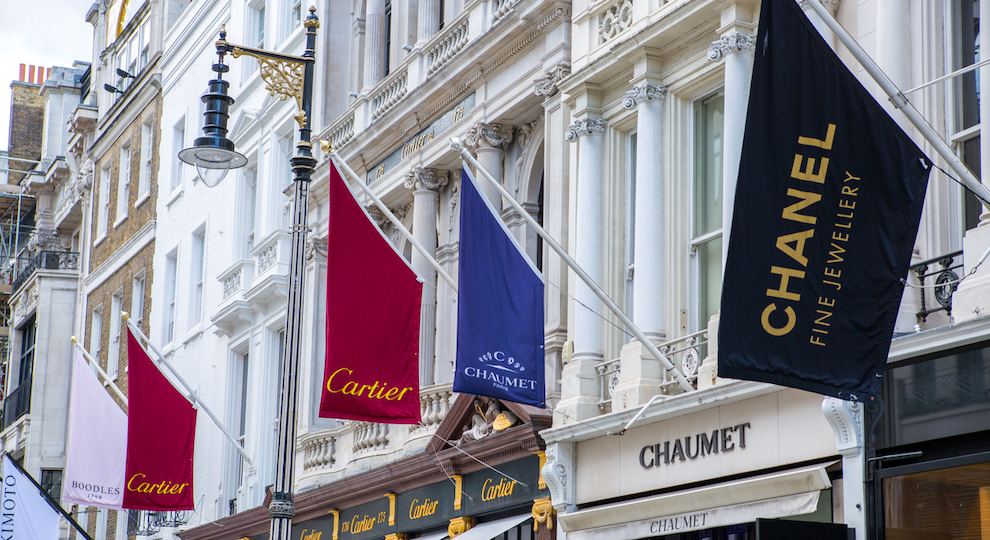Luxury marketing: The AI transformation
Editor’s note: Anka Twum-Baah is a CMO with Chief Outsiders, a fractional CMO firm.
As utilizing artificial intelligence (AI) to optimize marketing becomes more common across the globe, one sector unsurprisingly finds itself at the epicenter of the trend. Luxury marketing is, and always has been, an intricate and intimate endeavor. Just as in every other facet of interaction, luxury brands consistently look to reach their consumers with marketing that is as personalized and frictionless as possible. Meanwhile, the creativity, exclusivity, timeliness and individuality that set these brands apart serve to complicate the matters of business which underlie those efforts. Fashion houses and high-end retailers have soared or ceased to exist as a direct result of their ability to navigate so dynamic a task. Then came AI.
Many sectors have already incorporated AI to varying degrees, along with other technologies, to understand and anticipate customer needs. Luxury is no exception. And now, as the new year looms ahead, two important developments are coinciding:
- Luxury brands are realizing the extent to which AI can revolutionize their marketing efforts.
- AI is finally able to truly meet the varied needs of luxury brands.
As such, 2024 will see these brands operating with unprecedented trend forecasts, hyper-personalized consumer experiences and farsighted inventory management. Let’s explore what that might look like.
Trendspotting: The numbers behind the creativity
How does one shoehorn analytics into something so fundamentally creative as luxury design? The answer lies in collaboration, not capitulation. The truth is that even the most brilliant designers are at the mercy of the customer’s palette, and so marketing the wrong product at the wrong time can be just as costly as getting it right can be lucrative. Should luxury brands hand the keys to AI? No, of course not.
Rather, AI can act as a road map of the market, sifting through terabytes of sales data to predict what consumers will or will not be interested in next week. In that sense it does not dictate what brands should offer but provides designers and marketers alike with a framework within which to experiment without the risk of a complete misfire – a concept brands like Balmain are already realizing. Even if a designer chooses not to fully adhere to an AI’s predictions, at least they are able to do so with full knowledge of the risks being taken.
In addition, AI and predictive technology should not be limited to the creative side of the business. Brands like Alexander McQueen have been utilizing these same trendspotting technologies to decide between potential locations for retail. In luxury, as in any other field, the advantage will always lie with actionable, high-quality information.
Customer experience: A person, not a prediction
At its core, luxury is about the individual. Consumers expect a personalized experience. As a result, luxury brands have always had an interest in getting to know their customers and learning how to cater to their needs. In 2020, however, the concept of personalization was re-imagined to incorporate the reality of a remote world, making that task exceptionally more difficult without lessening the expectations of customers. The pandemic has abated, of course, but many aspects of that remote world are here to stay. Luxury brands have turned to AI for the customer understanding that a truly seamless experience requires. Now, opportunities are arising to go one step further.
Thus far, AI has been good at predicting a consumers’ preferences. More recently, however, these technologies have become increasingly apt at understanding the person as an individual, so much so that extrapolating from previous purchases has become obsolete. Instead, AI can use its understanding of the individual to create options that are tailored to their needs and desires, and that feel deeply personalized because they are deeply personalized.
Brands like Neiman Marcus are using AI photo recognition to recommend outfits specific to the consumer within their home, while others like Tesla and Audi are providing visceral experiences that bring customized vehicles to life outside of the traditional showroom. When marketing is literally built around the consumer, the limits become difficult to imagine.
Inventory management: Optionality at its finest
Finally, there is the business of luxury. Beyond glamor and passion, every luxury brand must make bottom-line decisions. What inventory should be pushed, and what should be left behind? What should be done when a new line of garments does not sell, and how does the company avoid this problem in the future? At the end of the day, the numbers have the final say.
Inventory management is an area in which artificial intelligence excels. AI allows a company to analyze its inventory beyond individual lines, considering the full extent of that inventory, together with macroeconomic trends and customer sentiments – as brands like Chanel, Dior and Louis Vuitton are already doing. This newfound, holistic scope can equip luxury brands with the information needed for short-term decisions – when to take risks, where to hold back – and long-term decisions – which items will continue to sell consistently or reemerge decades later. Armed with powerful information and far-reaching insight, luxury brands can market boldly and accelerate growth into an ever more knowable future.
AI and luxury brands
Few sectors have so delicate a task in marketing as does luxury. It is precisely for this reason that few sectors stand to be as dramatically reshaped by the fine-tuning of artificial intelligence. 2024 is set to be a year of many milestones, which will see ever more surgical analysis, comprehensive understanding and far-sighted prediction utilized as timely, personal and thoroughly informed marketing action. For luxury brands, that makes right now the time to catch one of the industry’s biggest waves to date, or risk sinking below the surface.
